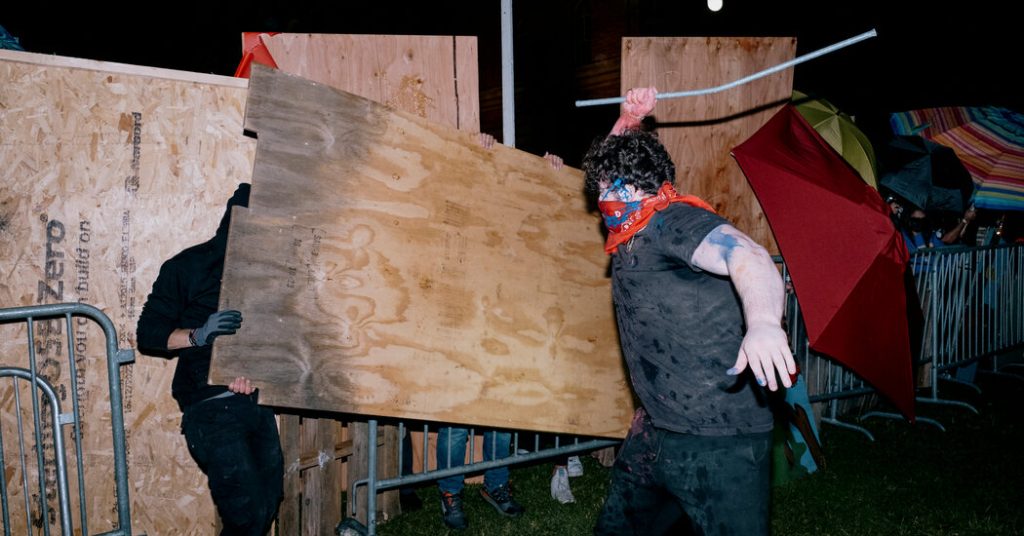Nearly two weeks after a pro-Palestinian encampment at the University of California, Los Angeles was attacked by counterprotesters, university officials have not provided an explanation for why security officers did not intervene during the assault. Witnesses reported a chaotic night of violence on April 30, during which they repeatedly called emergency services with little response. Governor Gavin Newsom’s office eventually ordered California Highway Patrol officers to the campus, along with L.A.P.D. riot police, to help quell the clashes. The tardy response has raised questions about lack of preparedness and authority among security officers.
An investigation by The New York Times found that there were no public callouts for a violent attack, and it was unclear if one group coordinated the assault. Security officers that were caught off guard appeared to be waiting for reinforcements that did not arrive for hours. University officials had indicated that outside police intervention would only occur as a last resort to protect physical safety, following University of California systemwide policy guidance. The ensuing violence on April 30 involved a growing group of counterprotesters who unexpectedly began dismantling the pro-Palestinian encampment.
Counterprotesters at the scene included individuals like Liel Asherian and Narek Palyan, who have offered conflicting explanations for their presence and actions. Video footage showed Asherian physically attacking the encampment barriers in response to being sprayed with pepper spray. Palyan, known for making antisemitic statements, claimed to be asking questions and attempting to prevent violence during the altercation. Concerns were raised about the presence of organized groups and individuals who may have planned for potential clashes, as well as the subsequent lack of intervention by law enforcement.
Brian H. Levin, a hate crime expert, stated that the attack on the pro-Palestinian encampment amounted to a hate crime, given the religious and ethnic tensions involved. The involvement of weapons and certain individuals known from previous protests suggested some level of coordination among the counterprotesters. The director of a nearby Chabad House denied any involvement in the events of that night but acknowledged that some individuals may have brought their own xenophobic motivations to the altercation. Over 30 protesters were injured before police dispersed the crowd.
After the counterprotesters left, police officers moved in to remove the pro-Palestinian encampment and made over 200 arrests the following day. U.C.L.A. graduate student Marie Salem questioned why the police had arrested student protesters but not those who had initiated the violence. The incident highlighted a discrepancy in how law enforcement responded to different groups present at the protest. The lack of arrests for those involved in the attack raised concerns about campus safety and the university’s handling of the situation. The investigation into the events that occurred on April 30 is ongoing, with multiple parties declining to comment until the inquiry is complete.


